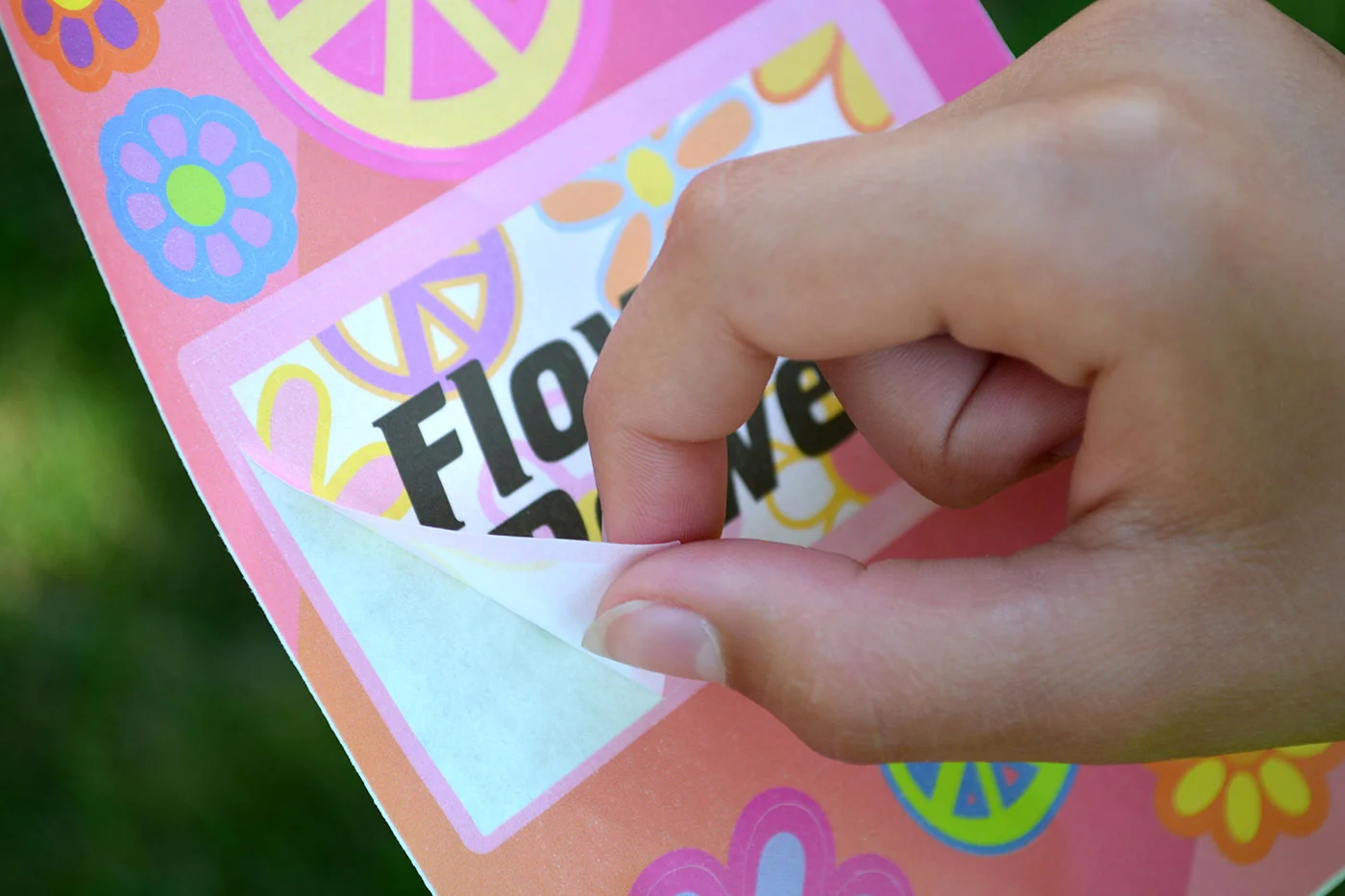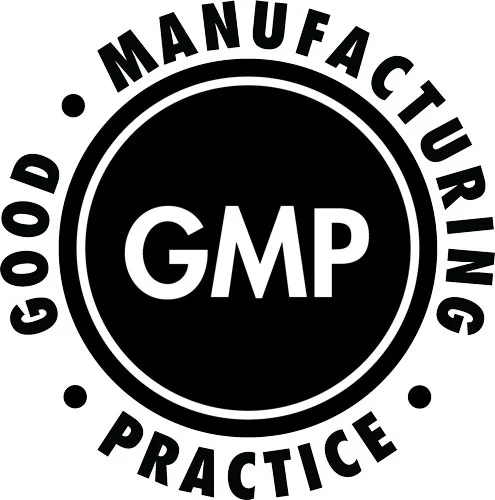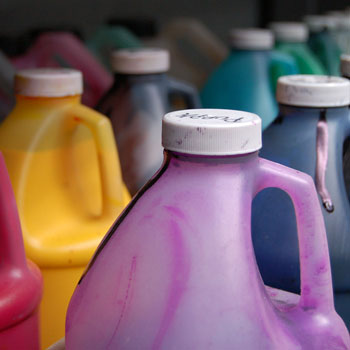As digital printing technologies continue to advance in terms of speed and quality, label and package printers are beginning to take notice.
Established in 1980 and offering more than 35 years of experience to its label and packaging clients, Century Label provides custom printed pressure-sensitive labels and shrink sleeves to businesses nationwide. The company employs a staff of 225 and occupies a 36,000 square foot manufacturing campus, in addition to 35,000 square feet of warehousing and distribution space at its headquarters in Bowling Green, OH.
According to Heidi Chambers, executive director, Century Label, precision printing and customer care are the company’s specialties. “With state-of-the-art digital and HD flexographic equipment and experienced color management and production teams, we are committed to providing custom printed products to meet each of our customers’ needs,” she offers.
Digital and Flexible
With roots as an analog provider, Century Label has successfully transitioned about 80 percent of its print work to digital.
Adopting the technology early on, the print services provider (PSP) installed its first digital press in 2000. “Century Label was an early adopter of HP Indigo technology, entering the market in 2000 with HP’s Series 1 press,” recalls Chambers. “Our founder, Al Caperna, had a great deal of foresight in that digital was game-changing technology in the print market,” she says.
The print provider initially selected HP Indigo technology based on several factors, including its 1,200 dpi resolution and one-to-one registration capabilities. Today, the shop operates three HP Indigo WS6800 Digital Presses to produce the majority of label and packaging jobs with customization and quality.
The HP Indigo WS6800 is a narrow-web printing solution for high-volume label and packaging production. It produce up to 131 linear feet per minute in color and feature advanced color automation and sophisticated color matching tools to ensure accuracy, consistency, and repeatability. It supports 0.5 to 18 pt. materials, including standard substrates with inline priming.
“Like buying a new computer or phone, technology becomes obsolete quickly. Therefore, we continue to invest in state-of-the-art printing equipment, workflow automation, quality inspection, and finishing improvements,” says Chambers.
Century Label also features a fully operational finishing department. When the PSP decided to expand its shrink sleeve offerings, it invested in a new seamer. It has also purchased additional converting equipment to keep up with capacity.
In addition to its printing and finishing capabilities, Century invested in Esko software back when it installed its first HP Indigo and has added three to four additional workflows each year. They also utilize the HP Mosaic Smartstream application, a unique software solution that enables the creation of unlimited designs of labels and shrink sleeves, making each piece an original.
In terms of substrates, Century Label prints on over 40 different materials, listing semi-gloss, white poly, and PETG as its mainstays.
With a mix of technology and a clientele of brand managers, color management is essential. “Perhaps the biggest challenge we have faced is color matching across platforms,” admits Chambers. “We became recognized experts in this area when we received the G7 qualification earlier this year.”
Customer Satisfaction
The use of digital is not an issue for Century Label’s customers. In fact, Chambers sees a new trend where brands are becoming educated on the quality that color digital printing provides, and have started to request it—sometimes over more economical options for longer print runs. She adds that quality has taken on a greater importance.
The company serves a variety of markets, from nutraceutical to industrial and chemical and health and beauty. However, its primary focus is food and beverage. “With continued popularity in craft beverages, this has become even more of a focal point,” admits Chambers.
The company recently utilized its digital printing capabilities to make a splash for Hella Bitters, a Brooklyn, NY-based company that produces various flavors of bitters and cocktail mixers. The brand was looking to make an impact on the West Coast, and planned to use the Winter Fancy Food show in San Francisco, CA as the venue to launch its new line of cocktail mixers.
However, the client hit a snag when they found themselves with a last-minute label redesign right before the show. In order to make its launch, they needed the new label proofs in hand, in CA, the day before the event. They connected with Century Label, who worked with the team to ensure this tight turnaround was met.
Tobin Ludwig, co-founder, Hella Bitters, says it enjoys a great workflow with its label provider. “We reach out last minute with hard tasks and deadlines, and it’s good knowing Century has the team, infrastructure, and know-how to meet demands,” he offers.
Early Adopters
Century Label is poised for success, armed with the latest digital technologies and field expertise as an earlier adopter of digital label and package printing technology.
Maintaining its reputation for early adoption, the print provider is adding to its lineup of HP Indigo WS6800s after realizing its need for increased digital capacity over the past year. The shop is excited to be a beta site for the new HP Indigo 8000. Announced by HP at drupa 2016, the HP Indigo 80000 Digital Press is a digital narrow web press that provides end-to-end label production with faster speeds—up to 262 feet per minute.
“Beginning this year, Century Label is the first HP customer in North America to install and enhance its production capabilities once again with the new HP Indigo 8000,” states Chambers. She explains that the enhanced speed allows for longer digital runs, increasing its capacity to handle large-scale jobs and enabling it to offer digital solutions in a space that has been traditionally filled by flexographic print.
“We are throwing all preconceived notions out the window and are going to test the boundaries of long-run digital. For example, whereas 5,000 feet may have previously been the crossover point to flexographic, we will create a new sweet spot for digital runs,” she shares.
With a platform similar to the WS6800, the 8000 provides familiarity and speed. Chambers says that because the 8000 features a two-engine system, it is able to nearly double the speed of its existing digital technology. “With this installation, we’re going to break every boundary in terms of crossover point. We’re going to rewrite the whole book.”
Trending Towards Digital
For Century Label, the future is digital, and has been for quite some time. By being proactive with its technology investments, the print provider offers its customers expertise, quality, and speed for digital label and shrink sleeve production. As brand owners become educated on the advantages of digital, Century looks forward to pushing boundaries and building its portfolio of services.
Article by Cassandra Balentine originally published in the January 2017 Issue of Industrial Print Magazine.















